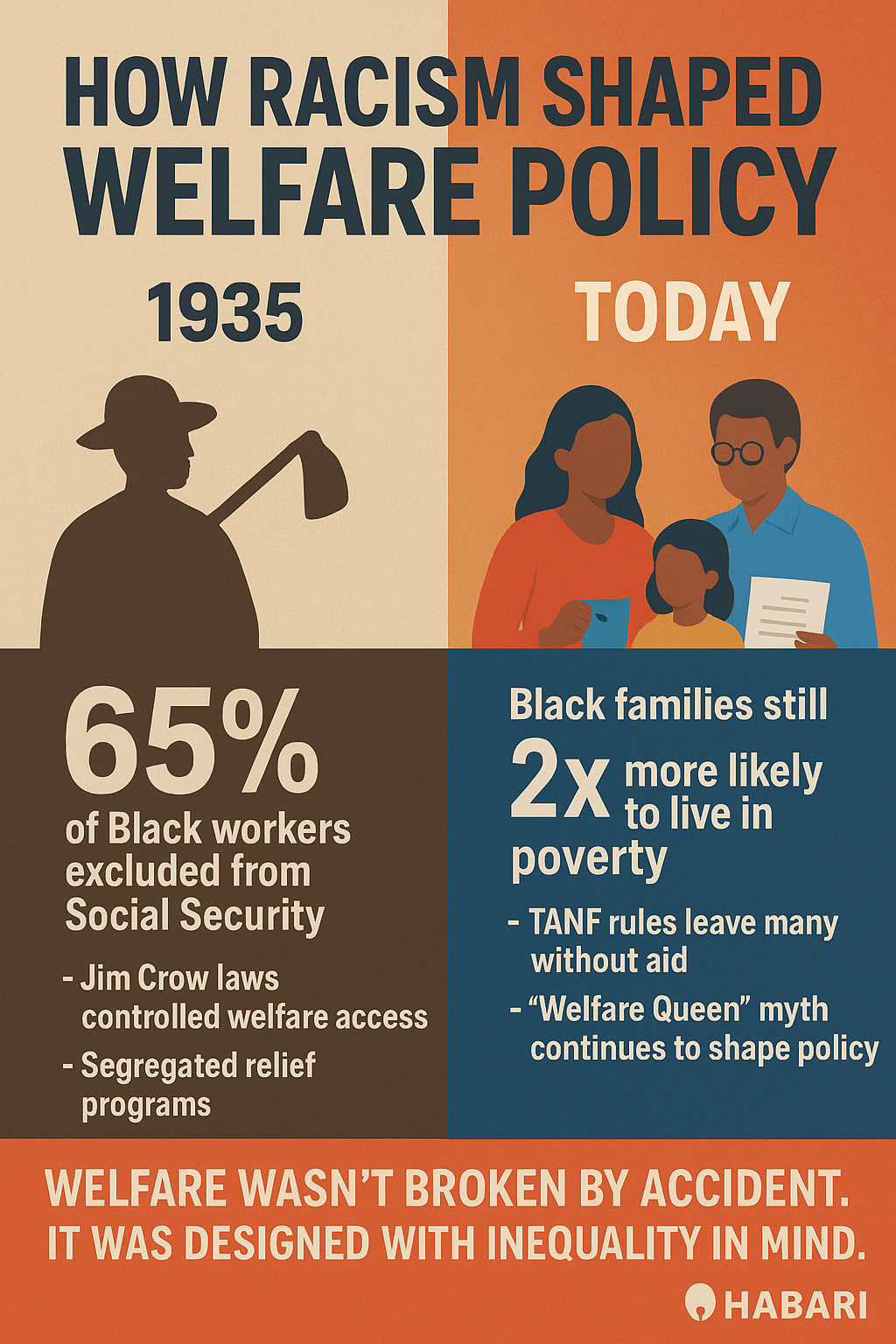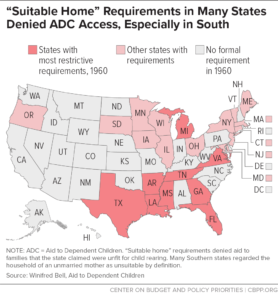When we talk about welfare in America, the conversation often turns to who “deserves” help and who doesn’t. What we don’t always acknowledge is that race has played a major role in shaping these policies from the very beginning.
From the 1930s to now, Black communities and other people of color have faced an uneven playing field when it comes to government support. The story of welfare in America isn’t just about economics — it’s about how racism has been written into the rules, who was included, and who was intentionally left out.
1935: A System Built with Exclusion in Mind
The Social Security Act of 1935 created two kinds of safety nets: one for workers who contributed through payroll taxes (like pensions and unemployment), and another for families in need, called Aid to Dependent Children.
Here’s the catch: the law excluded farmworkers and domestic workers — jobs mostly held by Black people at the time. That meant about 65% of Black workers were left out, compared to just 27% of white workers. Even when benefits expanded later, the damage was done. Black families were forced to survive without the same protections their white counterparts received.
Welfare and Jim Crow Politics
Programs like Aid to Dependent Children were run by states, and in the South, Jim Crow laws gave local officials free rein to discriminate. Rules like the notorious “man-in-the-house” policy allowed caseworkers to cut off aid if they suspected a man was living with the family.
For Black mothers especially, this created an impossible situation: too poor to make ends meet without help, but constantly policed and shamed for needing it.
The New Deal: Help with Strings Attached
New Deal programs like the Works Progress Administration (WPA) provided jobs to millions, including many Black families. But even relief came with segregation. Black workers were often placed in the hardest, lowest-paying jobs, and leadership roles were nearly always reserved for white workers.
Eleanor Roosevelt pushed back against some of these practices, but racism remained baked into how relief was distributed.
Beyond Welfare: Housing and Labor Inequities
It wasn’t just cash assistance. Labor and housing policies also locked Black families out of opportunity. The Wagner Act of 1935 gave unions more power, but many unions simply barred Black workers. Meanwhile, redlining in housing denied loans to Black families, trapping them in underfunded neighborhoods and blocking the path to building wealth through homeownership.
These structural barriers ensured that even as white families built middle-class stability through government-backed programs, Black families were systematically shut out.
The “Welfare Queen” Myth
By the 1960s and 1970s, a new stereotype took hold: the so-called “welfare queen.” Politicians and media painted Black women as lazy, manipulative, and dependent on government aid.
This narrative wasn’t just harmful — it was strategic. It turned public opinion against welfare programs, making it easier for lawmakers to slash benefits and add strict work requirements. The stereotype erased the real story: most welfare recipients were white, and most used aid temporarily. But the damage was lasting.
Why It Still Matters Today
The 1996 welfare reform replaced Aid to Families with Dependent Children (AFDC) with Temporary Assistance for Needy Families (TANF). With time limits and work requirements, it became harder than ever for struggling families to qualify for support. Black and brown families are still disproportionately impacted by these restrictions.
The legacy of these policies shows up in the racial wealth gap, higher poverty rates in Black communities, and the continued stigma around asking for help.
Looking Forward
Welfare in America has always been more than a safety net. It’s a mirror reflecting who this country believes is worthy of dignity and care.
For decades, racism shaped that mirror, distorting the truth about who needs help and why. As conversations about guaranteed income, child tax credits, and equity-centered policies grow louder today, it’s critical to remember this history.
Real change requires more than reform — it requires undoing the racist foundations built into the system. Only then can welfare truly serve everyone, fairly and equally.
Habari Entertainment Takeaway: Welfare isn’t broken by accident. It was designed with inequality in mind. Understanding that history is the first step in making sure future policies don’t repeat the same mistakes.












More Stories
Suspect Arrested After Deadly Tempe Marketplace Shooting Linked to Online Sale
JustWatch US Streaming Charts: Massive Stranger Things Surge and Hit Movie Wicked Dominate November Streaming Charts
Police ID two motorcyclists killed after fight, shooting and crash near I-17 in Phoenix